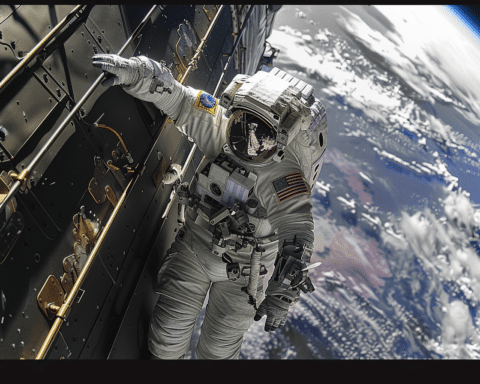In a remarkable technological feat, NASA has successfully streamed a high-definition video of a cat named Taters from the depths of space back to Earth. This 15-second clip of Taters playfully chasing a laser beam was transmitted using laser technology, covering an astonishing distance of 19 million miles. To put this into perspective, it’s roughly 80 times the distance between Earth and the Moon.
This groundbreaking achievement serves as a significant milestone for NASA, as it marks a substantial advancement in their quest to improve communication capabilities with the farthest reaches of our solar system.
Taters, the star of the video, had all four paws firmly planted on Earth, and the feline sensation is owned by an employee of NASA’s Jet Propulsion Laboratory (JPL) in California. The video’s journey began when it was uploaded to a spacecraft launched into space aboard SpaceX’s Falcon Heavy rocket from Florida’s Kennedy Space Center on October 13th. The video was then streamed back to Earth on December 11th.
One of the most impressive aspects of this achievement is the incredible speed at which the video data was transmitted. Despite originating millions of miles away, the laser transmission outpaced most broadband internet connections, showcasing the potential of this cutting-edge technology.
The video was received by the Hale telescope at the Palomar observatory, where it was successfully downloaded. From there, it was streamed to the JPL in real-time, further demonstrating the efficacy of the transmission.
Bill Klipstein, the demonstration project manager at JPL, noted that the video was specially designed to commemorate this momentous event. It featured additional graphics overlaying technical mission information, as well as Taters’ breed, heart rate, and age, making it a truly memorable transmission.
NASA’s achievement is part of the Deep Space Optical Communications (DSOC) mission, which is the space agency’s first foray into improving communications beyond the Earth-Moon distance. As radio frequencies struggle to handle the vast amount of data needed to transmit high-quality images and videos over extensive distances, DSOC seeks to explore new technologies capable of delivering higher bandwidth content from the deepest reaches of space to Earth.
Pam Melroy, NASA’s deputy administrator, emphasized the significance of this accomplishment, stating that it underscores their commitment to advancing optical communications. She highlighted the importance of increasing bandwidth to achieve future exploration and science goals, signaling a transformation in how we communicate during interplanetary missions.
NASA’s successful transmission of Taters’ laser-chasing antics from deep space to Earth marks a significant leap forward in our ability to communicate across vast cosmic distances. As technology continues to evolve, it opens up exciting possibilities for future interplanetary missions and scientific endeavors, promising a new era of space exploration and communication.




